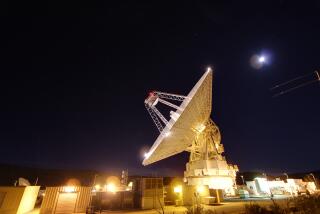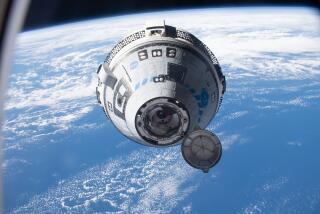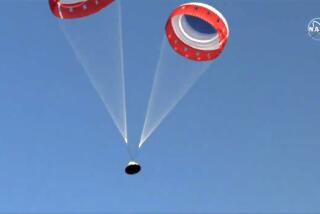Science / Medicine : ANALYSIS : NASA’s Misplaced Reliance on the Shuttle Program
- Share via
Now that the space shuttle has redeemed NASA’s technological honor, good sense calls for consigning the fleet to museum status and getting on with a workable space program.
The essence of such a program would be simple, reliable launchers, unencumbered by the most useless cargo ever sent into orbit--fragile astronauts. The folly of a space program fixated on humans is apparent, but that does not bother NASA, or many of its aerospace industry allies, or the simple-minded space romantics who derive vicarious kicks from man in space.
The NASA propaganda mill, abetted by an uncritical press, portrays the revival of the shuttle as a triumph and harbinger of a great era in space. But in reality, the shuttle was from the start a cumbersome and awkward craft designed as much for public relations as for working in space. Looking for an extravaganza as a follow-on to the moon landing, the space establishment adopted the shuttle as a high-visibility venture that would grip public attention.
NASA thus offered the glamour of man in space, but without inviting much notice to the fact that the shuttle takes off and lands automatically. Furthermore, most if not all the chores assigned to the crew could be performed by robotics--if funds were devoted to developing robots. To create an aura of necessity for the shuttle, NASA planned development of a manned, but purposeless, space station for which the shuttle would haul construction materials. The White House and Congress then contributed to the inevitable debacle by telling the space agency to proceed, but on a shoestring.
A promise of frequent, relatively inexpensive flights by the shuttle--50 a year, Congress was initially told--never came even close to fulfillment. When the ill-fated Challenger went aloft, NASA was straining to manage a dozen flights a year. In just a few years, the shuttle had rapidly and ungracefully aged into creaky obsolescence, suffering from old computers and other antiquated equipment ripe for the Smithsonian.
Before the 32-month hiatus in flights that followed the Challenger explosion, NASA had reduced the “turnaround,” or preparation time, for a shuttle flight to 55 workdays, according to a new report by the Congressional Office of Technology Assessment. But because of safety changes and intensified concern about risks, the turnaround time has now increased to 150 days, OTA reports. Before the crash, NASA described the shuttle as “operational,” rather than experimental, though those astonishingly lengthy turnaround times would bankrupt any commercial operation.
In aviation, reliability grows as aircraft evolve from the experimental to the operational stage. But the surviving three shuttle orbiters, as well as the Challenger replacement under construction, are handmade craft that will never achieve routine operations.
The OTA study notes that “each of the solid rocket boosters, one of the simpler shuttle elements, contains about 75,000 parts and components. Of these, about 5,000 are removed, inspected, and replaced or refurbished after each shuttle flight.” OTA adds that the shuttle has “about 250,000 electrical connections which must be tested for continuity. Each time one of the 8,000 connectors is disconnected or removed, there is a chance that one or more pins will be damaged or will otherwise fail to reconnect properly.”
At present, there’s not enough launch capacity to take the place of the shuttle--the reason being that cost overruns on the shuttle consumed funds for alternative means of getting into space. But with all due speed, the big white elephants should be put to pasture in favor of less costly but more reliable basic launch vehicles. As in pre-shuttle days, these can attend to NASA’s show-biz requirements by lofting men into space.
Retirement of the shuttle should not be mistaken as wastefulness. NASA and its political chiefs must learn the basic lesson of economics that catches up with every car owner. At some point, it’s cheaper to trade it in than to keep on fixing it.
More to Read
Sign up for Essential California
The most important California stories and recommendations in your inbox every morning.
You may occasionally receive promotional content from the Los Angeles Times.










